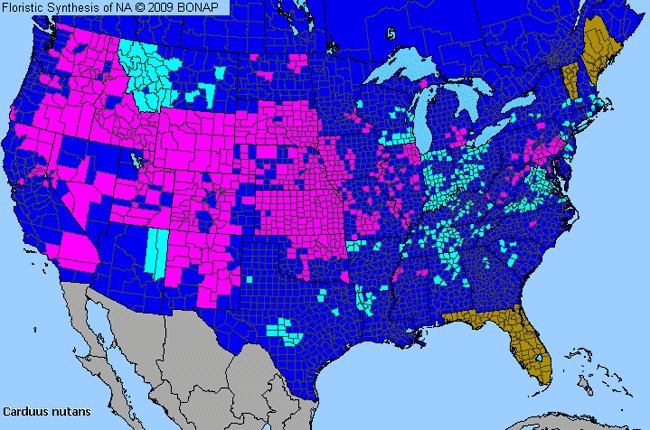Nodding Plumeless-Thistle (Carduus nutans)

Nodding Plumeless-Thistle Species Description

These plants are from foreign areas (those that occur outside of North America north of Mexico) that have been released intentionally or unintentionally. Plants that have been disseminated or escaped as a result of human activity, and become established somewhere within the United States, Canada or Greenland.
Allergenicity: Nodding Plumeless-Thistle (Carduus nutans) is a mild allergen.
Pollination: Occurs in following seasons depending on latitude and elevation: Spring to Fall.
Angiosperm - Flowering Dicot: Plants in this group have two embryonic leaves (dicotyledons). Examples of dicotyledons are beans, buttercups, oaks, sunflowers, etc.
Forb: A broad-leaved herb other than a grass, especially one growing in a field, prairie, or meadow.
Weed: Any plant growing in cultivated ground to the injury of the crop or desired vegetation, or to the disfigurement of the place; an unsightly, useless, or injurious plant.
Biennial: Occuring every two years.
Perennial: Living for many years.
State Noxious Weed: unpleasant and possibly also harmful.
Herbaceous Stem: Not woody, lacking lignified tissues.
Nodding Plumeless-Thistle Species Usage

Butterfly Plant: A plant that is known to attract butterflies.
Related Links

More Nodding Plumeless-Thistle (Carduus nutans) imagesby Jessie M. Harris from BONAP










